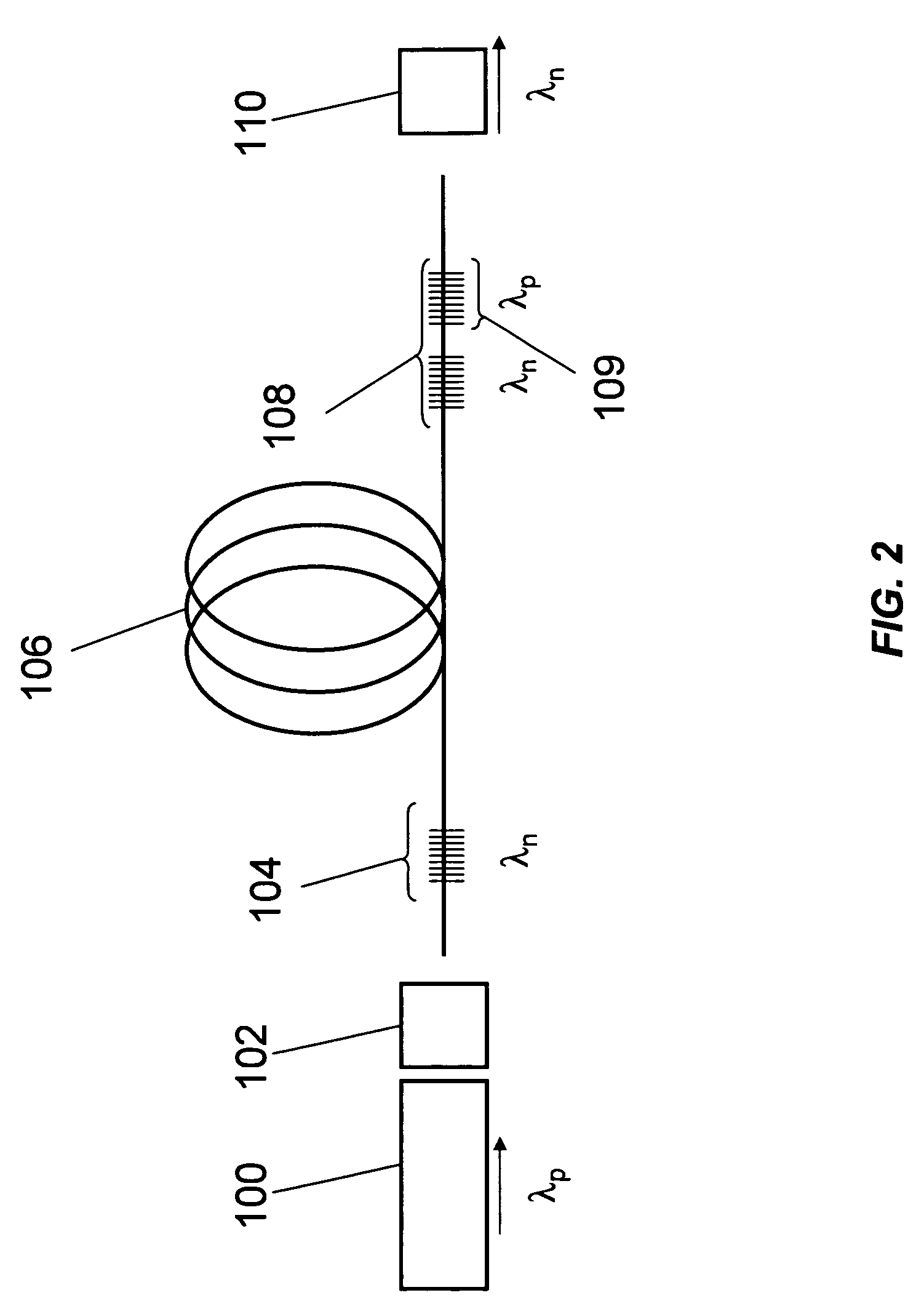Method and apparatus for generating high power visible and near-visible laser light
a laser light and visible and near-visible technology, applied in the direction of semiconductor lasers, laser details, basic electric elements, etc., can solve the problems of generating power levels above 1 watt at arbitrary wavelengths, reducing the efficiency and reliability of laser light generation, and limiting the available output power to the sub-watt level, etc., to achieve efficient and reliable output beams and high brightness
- Summary
- Abstract
- Description
- Claims
- Application Information
AI Technical Summary
Benefits of technology
Problems solved by technology
Method used
Image
Examples
Embodiment Construction
[0021]The first fiber-based Raman lasers were demonstrated in the late 1970's. In 1992 Chiang used nanosecond pulses from a dye laser to observe beam cleanup via SRS in multimode optical fiber. In 1999 Rodgers et al demonstrated coherent beam combining and cleanup using stimulated Brillouin scattering in multimode optical fiber. This work was followed up two years later combining incoherent beams.
[0022]Significant advances in rare-earth-doped fiber lasers began at the turn of the millennium. These advances were driven by improvements in diode pump lasers, fiber processing and device design. Substantial effort and innovation have been invested in maintaining single-mode operation in these high-power devices. The bias towards single-mode devices has been maintained as high-power Raman lasers have begun being sought.
[0023]In 2002 Dianov published a review article, “Advances in Raman Fibers” and discussed only single-mode devices. In the above referenced articles, fiber Raman lasers are...
PUM
 Login to View More
Login to View More Abstract
Description
Claims
Application Information
 Login to View More
Login to View More - R&D
- Intellectual Property
- Life Sciences
- Materials
- Tech Scout
- Unparalleled Data Quality
- Higher Quality Content
- 60% Fewer Hallucinations
Browse by: Latest US Patents, China's latest patents, Technical Efficacy Thesaurus, Application Domain, Technology Topic, Popular Technical Reports.
© 2025 PatSnap. All rights reserved.Legal|Privacy policy|Modern Slavery Act Transparency Statement|Sitemap|About US| Contact US: help@patsnap.com



